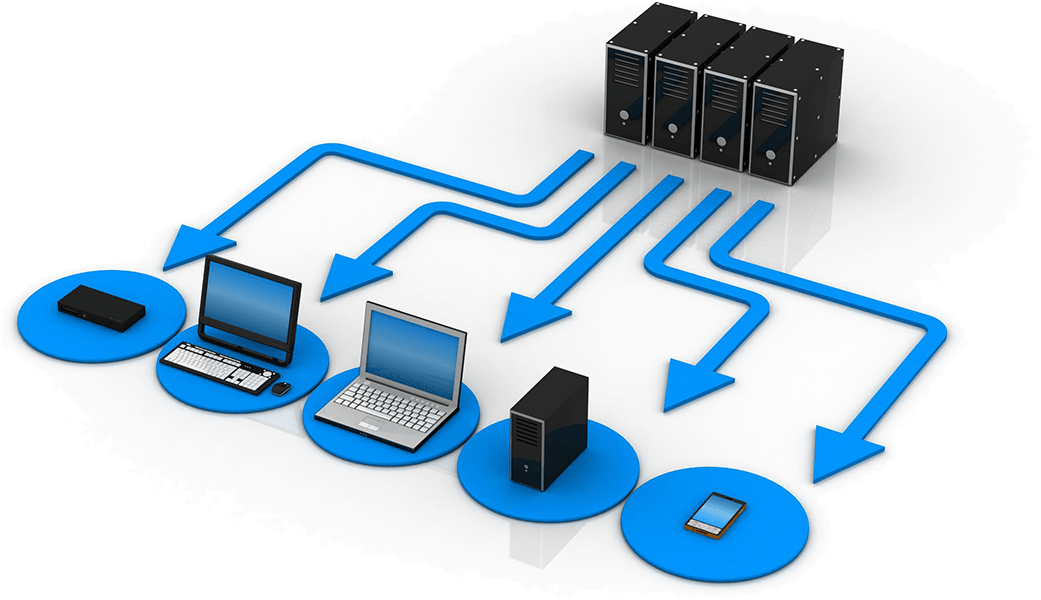
In today’s rapidly evolving digital landscape, businesses are constantly seeking ways to maximize the agility, scalability, and cost-efficiency of their IT infrastructure. One strategy that has gained significant traction is the adoption of hybrid cloud environments. A hybrid cloud combines on-premises infrastructure with public and private cloud resources to create a flexible and dynamic IT ecosystem. However, harnessing the full potential of a hybrid cloud can be complex without the right infrastructure in place. This is where Software-Defined Infrastructure (SDI) comes into play, offering a robust foundation to support hybrid cloud strategies. In this blog post, we’ll explore how SDI empowers businesses to leverage the benefits of hybrid cloud solutions.
Understanding Hybrid Cloud
Before delving into the role of Software-Defined Infrastructure, it’s essential to grasp the concept of hybrid cloud. A hybrid cloud is a computing environment that combines on-premises infrastructure (private cloud or traditional data centers) with one or more public cloud providers like Amazon Web Services (AWS), Microsoft Azure, or Google Cloud Platform (GCP). This approach allows organizations to enjoy the best of both worlds—maintaining control over sensitive data and critical applications on-premises while leveraging the scalability and cost-efficiency of the public cloud for less sensitive workloads.
Hybrid cloud adoption has been on the rise due to its ability to:
1. Optimize Costs
Hybrid cloud enables businesses to scale resources up or down according to demand. This flexibility helps organizations avoid overprovisioning on-premises infrastructure, reducing capital expenditure.
2. Enhance Flexibility
The hybrid model allows for seamless workload migration between on-premises and cloud environments, offering flexibility in resource allocation.
3. Improve Disaster Recovery
Hybrid clouds provide robust disaster recovery options by replicating data and workloads between on-premises and cloud environments, ensuring data resilience and availability.
4. Support Innovation
Hybrid cloud enables businesses to quickly experiment with new technologies and applications in the cloud while keeping critical operations on-premises.
However, reaping these benefits to the fullest extent requires a solid foundation, which is where Software-Defined Infrastructure enters the picture.
The Role of Software-Defined Infrastructure (SDI)
Software-Defined Infrastructure is an approach that abstracts and virtualizes all IT resources—compute, storage, and networking—providing a unified management and automation layer. Here’s how SDI supports hybrid cloud strategies:
1. Resource Abstraction and Pooling
SDI abstracts physical hardware resources, turning them into virtualized pools of compute, storage, and networking capacity. This abstraction enables organizations to manage resources centrally, regardless of their physical location—whether on-premises or in the cloud.
2. Automation and Orchestration
SDI relies heavily on automation and orchestration to provision and manage resources. With automation, IT teams can rapidly deploy and scale workloads in response to changing demands, ensuring efficient resource utilization.
3. Cross-Cloud Compatibility
SDI solutions are often designed to be vendor-agnostic, making it easier to manage workloads across different cloud providers. This cross-cloud compatibility allows for seamless workload migration and optimization based on cost and performance.
4. Scalability and Elasticity
SDI’s dynamic resource allocation capabilities align perfectly with the scalability and elasticity requirements of a hybrid cloud environment. It ensures that workloads can seamlessly transition between on-premises and cloud resources as needed.
5. Enhanced Security and Compliance
Maintaining control over sensitive data is a top priority for businesses. SDI provides the security and compliance features required to meet regulatory standards and protect data, whether it’s stored on-premises or in the cloud.
6. Performance Optimization
SDI continuously monitors resource performance and can automatically adjust resource allocation to optimize performance, ensuring that workloads consistently meet performance expectations.
Case in Point: SDI in Hybrid Cloud
To illustrate the real-world impact of Software-Defined Infrastructure on hybrid cloud strategies, consider the following scenario:
Imagine a retail company that experiences fluctuating demand throughout the year, with peaks during holiday seasons. By implementing a hybrid cloud strategy supported by SDI, the company can maintain its critical inventory management system on its on-premises infrastructure while using public cloud resources to handle additional website traffic and customer transactions during peak times. SDI’s automation capabilities enable the company to seamlessly allocate and de-allocate resources as needed, optimizing costs and performance.
In Conclusion
Software-Defined Infrastructure serves as the linchpin for businesses looking to unlock the full potential of hybrid cloud strategies. Its ability to abstract, automate, and optimize resources across on-premises and cloud environments ensures that organizations can achieve the agility, scalability, and cost-efficiency they seek in their digital transformation journey.
As technology continues to evolve, the synergy between Software-Defined Infrastructure and hybrid cloud strategies will become even more critical. Businesses that embrace this combination will be better equipped to thrive in an increasingly competitive and fast-paced digital landscape, positioning themselves for sustained success in the years to come.


